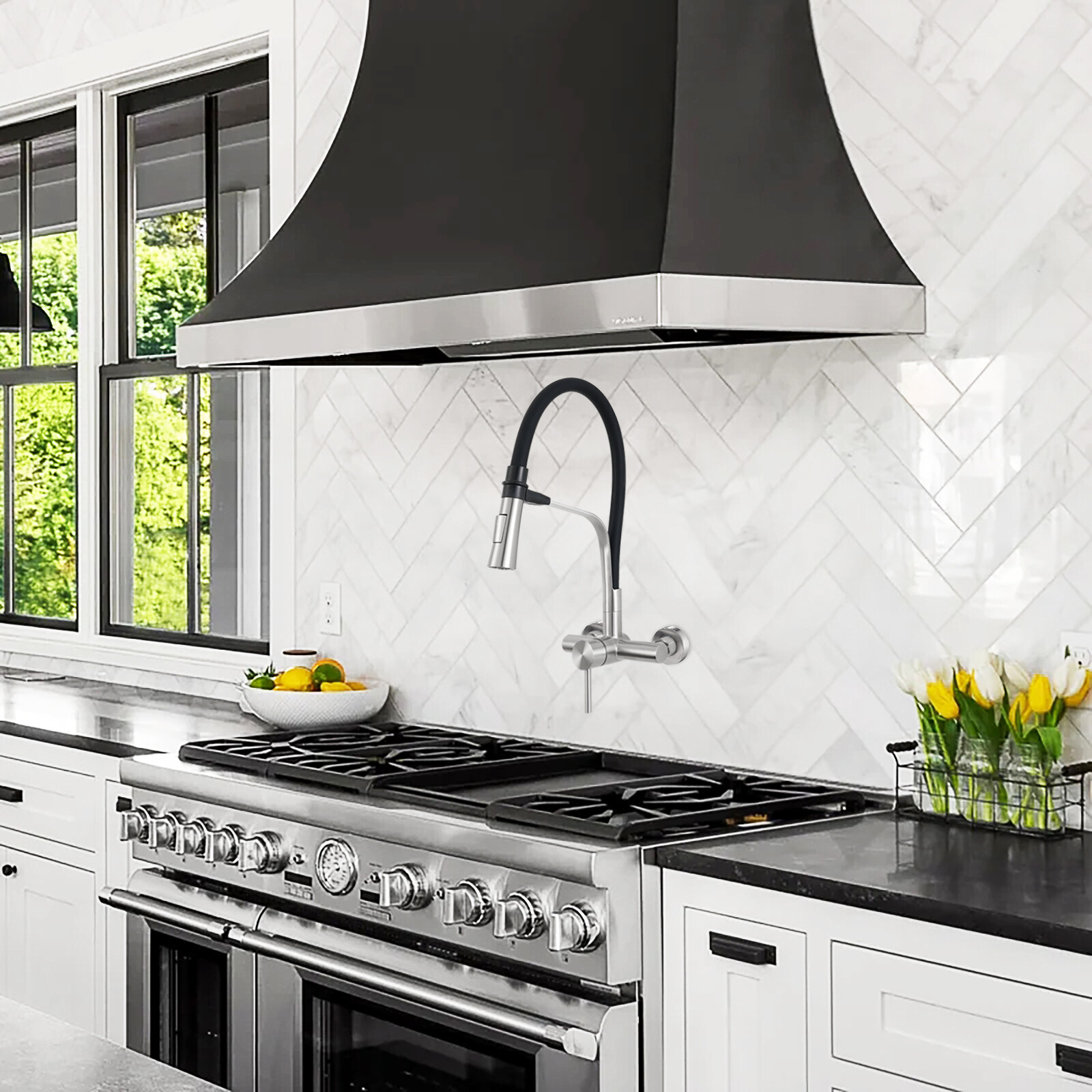The kitchen faucet is more than just a functional tool; it’s a centerpiece of your kitchen’s design and a critical component of your daily routine. Whether you're rinsing vegetables, washing dishes, or filling a pot, the right faucet can make your kitchen tasks more efficient and enjoyable. But with so many options available, how do you choose the perfect one? This guide will walk you through the key factors to consider, helping you find the faucet that fits both your needs and style.
1. Understand Your Kitchen Layout and Needs
Before diving into styles and features, consider your kitchen’s layout and your personal requirements.
Assess Sink Configuration
- Single Bowl Sinks: Often pair well with a single-handle faucet for space efficiency.
- Double Bowl Sinks: A pull-down or pull-out spray faucet can add flexibility.
- Island or Prep Sinks: A compact bar faucet may be the best choice.
Evaluate Usage Frequency
- For heavy use, invest in a durable, high-quality faucet with advanced features.
- For light use, a simple, budget-friendly option may suffice.
2. Choose the Right Faucet Type
Kitchen faucets come in various types, each offering unique benefits.
Single-Handle Faucets
- Advantages: Easy to use, compact, and modern.
- Considerations: May require fine adjustments for precise water temperature control.
Double-Handle Faucets
- Advantages: Offers precise temperature control and a traditional aesthetic.
- Considerations: Requires more installation space.
Pull-Down and Pull-Out Faucets
- Pull-Down Faucets: Ideal for deep sinks; the spray head pulls downward.
- Pull-Out Faucets: Offers better reach for filling pots or cleaning around the sink.
Touchless Faucets
- Advantages: Hygienic and convenient; activated by motion sensors.
- Considerations: Higher initial cost and requires a power source (battery or AC).
Commercial-Style Faucets
- Advantages: High water pressure and professional-grade performance.
- Considerations: May be too large for compact kitchens.
3. Select the Material and Finish
The material and finish of your faucet impact both its durability and aesthetics.
Popular Materials
- Stainless Steel: Corrosion-resistant, durable, and easy to clean.
- Brass: Known for longevity and resistance to rust.
- Zinc-Alloy: More affordable but less durable.
Finishes to Consider
- Chrome: Shiny, modern, and easy to clean.
- Brushed Nickel: Subtle, fingerprint-resistant, and pairs well with most kitchen styles.
- Matte Black: Sleek, contemporary, and dramatic.
- Oil-Rubbed Bronze: Ideal for rustic or traditional kitchens.
4. Look for Functional Features
Modern faucets offer a range of features to improve usability.
Spray Options
Many faucets come with multiple spray modes, such as:
- Stream Mode: For filling pots and pitchers.
- Spray Mode: For rinsing dishes or washing produce.
- Pause Mode: To temporarily stop water flow without turning off the faucet.
Swivel Spouts
A high-arc faucet with a swivel spout provides more clearance for large pots and better sink coverage.
Built-in Filters
Some models include integrated water filters for improved water quality.
Magnetic Docking
Faucets with magnetic docking systems keep the spray head securely in place when not in use.
5. Consider Installation Requirements
Before purchasing a faucet, make sure it’s compatible with your sink and plumbing system.
Check the Mounting Holes
- Single-Hole Faucets: Ideal for minimalist designs.
- Three-Hole Faucets: Often needed for double-handle models or faucets with additional features like soap dispensers.
Deck-Mount vs. Wall-Mount
- Deck-Mount: Attached to the sink or countertop; common in most kitchens.
- Wall-Mount: Offers a unique look and frees up countertop space but requires specific plumbing.
6. Stick to Your Budget
Kitchen faucets come in a wide price range. Set a realistic budget to narrow down your options without compromising on quality.
- Budget Range: $50–$150 (basic models).
- Mid-Range: $150–$300 (modern features, better durability).
- Premium Range: $300+ (touchless, commercial-grade, luxury finishes).
7. Ensure Quality and Warranty
Invest in a faucet from a reputable brand that offers a solid warranty. Key quality indicators include:
- Ceramic Disc Valves: Prevent leaks and drips.
- Solid Construction: Avoid models with plastic parts in critical areas.
- Warranty Coverage: Look for warranties of 5 years or more.
8. Don’t Forget Style
A well-chosen faucet complements your kitchen’s design theme.
- Modern Kitchens: Opt for sleek lines, stainless steel, or matte black finishes.
- Traditional Kitchens: Consider oil-rubbed bronze or vintage-style designs.
- Farmhouse Kitchens: A bridge faucet with a rustic finish can enhance the aesthetic.

Conclusion
Choosing the perfect kitchen faucet is about balancing functionality, durability, and style. By understanding your needs, exploring various types, and focusing on quality materials and features, you can find a faucet that enhances both your kitchen’s performance and its visual appeal.
Take the time to research, and you’ll enjoy the benefits of a well-chosen faucet for years to come!


